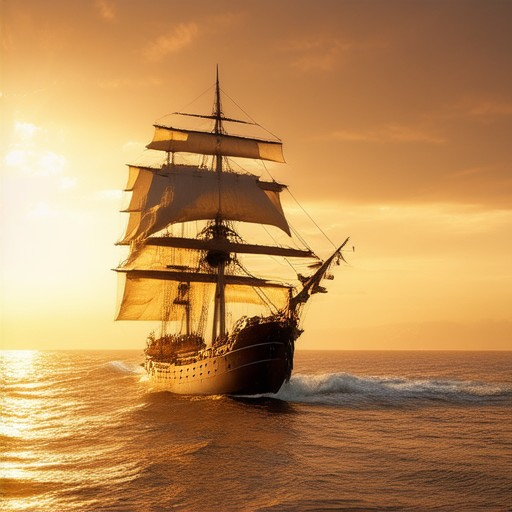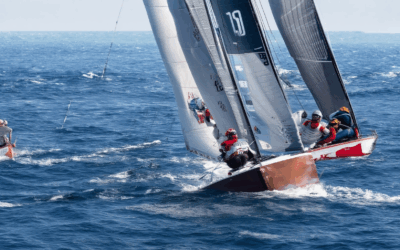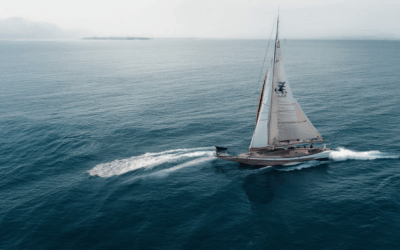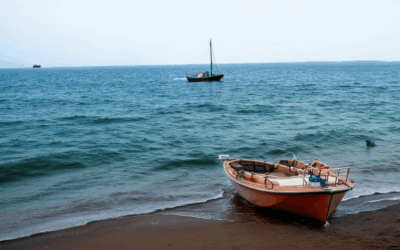Capturing the essence of a sailing seascape in a photograph is a challenge that many photography enthusiasts face. The interplay of light, water, and the majestic form of sailing vessels creates a unique scene that demands precision and creativity. Whether you’re a seasoned photographer or just beginning, understanding the right techniques to capture these breathtaking moments can elevate your work to new heights. From mastering the perfect time to shoot and the ideal lighting conditions to composing a shot that captures both movement and perspective, this guide offers expert tips to help you master sailing seascape photography and create stunning visuals that truly reflect the beauty of the open sea.

How to Take Stunning Photos of Sailing Ships Against a Scenic Seascape
To capture stunning photos of sailing ships against a scenic seascape, consider the following tips:
- Lighting: Shoot during the golden hours, typically 1-2 hours after sunrise or before sunset, for soft, diffused light that enhances the ship’s silhouette and the surrounding scenery.
- Ship Positioning: Place the ship near the horizon to make it appear more majestic and less imposing. Use a telephoto lens to emphasize the ship’s size and detail.
- Composition: Apply leading lines by finding paths or patterns in the water that guide the viewer’s eye toward the ship. Consider a symmetrical composition for balance or an off-center placement for dynamic energy.
- Background Management: Choose calm waters for serenity or incorporate subtle wave motion for dramatic effects. Ensure the background complements the ship without distracting from the subject.
- Color Palette: Experiment with sunset hues for vibrant colors and cooler tones during overcast days for a moody atmosphere. Pay attention to how colors interact with the ship and the sea.
- Filters: Use a polarizing filter to reduce glare and enhance color saturation. Apply a graduated ND filter to balance exposure between the sky and foreground elements.
- Post-Processing: Crop your photos to frame the scene effectively. Adjust exposure and contrast to highlight details and textures. Fine-tune using editing software to bring out the best qualities of the image.
- Ship Features: Include unique elements like masts, rigging, or interactions with nearby structures (e.g., bridges or lighthouses) to add visual interest and context to your photos.
- Patience and Observation: Be prepared to wait for the perfect moment. Observe the ship’s movement and the changing landscape to capture dynamic and engaging compositions.
- Safety First: Check weather forecasts and tides before heading out. Stay aware of your surroundings to ensure safety while focusing on capturing the perfect shot.
- Technical Considerations: Use manual mode or aperture priority settings to gain control over depth of field and focus. Experiment with ISO settings to balance noise reduction and low-light performance.
- Share and Connect:
- Upload your photos to sailing communities and photo-sharing platforms to receive feedback and connect with fellow photography enthusiasts.
- Engage with others to learn tips and tricks, and stay updated on the latest photography trends in the sailing world.
How to Take Great Photos of Sailing Ships Against Scenic Seascapes
To capture stunning photos of sailing ships against scenic backgrounds, consider the following tips:
1. Plan Around Golden Hour
Golden hour, typically one hour after sunrise or sunset, offers soft, diffused light with warm tones. This lighting enhances the drama of the scene and brings out details in the ship and the sky.
2. Focus on Composition
Composition is key. Use leading lines like the ship’s mast or rigging to draw the viewer’s eye toward the horizon. Incorporate elements that provide scale, such as waves or distant landmarks, to make the ship appear smaller and more impressive.
3. Experiment with Aperture and Shutter Speed
Use a wider aperture (e.g., f/8) to keep the ship sharp by increasing depth of field. Adjust shutter speed to control wave movement—faster speeds freeze motion, while slower ones can create dynamic blurs.
4. Utilize Polarizing Filters
A polarizing filter reduces glare and enhances color vibrancy, making the sky and ocean pop. Consider renting one for your shoot to maximize the visual impact.
5. Focus Carefully
Manual focusing is recommended for critical focus on the ship, especially in low-light conditions. Alternatively, use autofocus and switch to manual mode for precise adjustments.
6. Capture the Environment
Include details like the ship’s rigging, crew, or unique angles from the bow. These elements add interest and scale to your photos.
7. Post-Processing
Edit your photos to enhance colors and contrast. Remove unwanted elements through cropping and adjust exposure for optimal results using tools like Adobe Lightroom or GIMP.
8. Stay Patient and Observant
Patiently wait for the perfect conditions. Set up a tripod for stability and take multiple shots during the golden hour to capture varied lighting and compositions. By combining these techniques, you can create striking photos that showcase the grandeur of sailing ships against breathtaking seascapes. Practice, seek feedback, and stay patient as you refine your skills.

What Makes a Sailing Seascape Photo Stand Out?
A standout sailing seascape photo is one that captivates the viewer with its unique composition, lighting, and storytelling potential. Here’s what sets these photos apart:
Masterful Composition
- Balance and Symmetry: A well-composed photo balances elements like horizon, boat, waves, and sky, creating visual harmony.
- Rule of Thirds: Position key subjects like the boat or sails at intersections of the rule of thirds grid for dynamic appeal.
- Focal Point: Ensure the boat or distant horizon serves as the focal point, drawing the eye and creating depth.
- Leading Lines: Use lines like waves or mast poles to guide the viewer’s gaze across the frame.
Dramatic Lighting
- Golden Hour: Soft, diffused light during sunrise or sunset adds warmth and texture to the scene.
- Backlighting: Silhouettes the boat or creates dramatic shadows, emphasizing shape and motion.
- Cloudscapes: Unique cloud formations can add drama and scale to the seascape.
Color Harmony
- Pastel Tones: Subtle hues of blue, green, and yellow evoke calm and serenity.
- Contrasting Colors: Bright colors like red sails or white wakes against dark water create vivid contrasts.
- Sunsets and Sunrises: Rich, warm tones transform the ordinary into the extraordinary.
Dynamic Movement
- Capturing Motion: Showcasing the movement of waves, sails, or boats adds life to the image.
- Blurred Backgrounds: A blurred horizon or distant boats enhance the sense of depth and focus on the foreground subject.
- High-Speed Action: Dramatic shots of racing yachts or surfers create excitement and energy.
Storytelling Potential
- Cultural Context: Incorporate elements like local landmarks or traditions to add depth and meaning.
- Emotional Connection: A photo that evokes memories of travel, adventure, or personal connections resonates more deeply with viewers.
- Unique Perspectives: Capture the scene from an angle that offers a fresh viewpoint, like an extreme low angle or bird’s-eye view.
To further explore these elements, visit Sailing Photo Awards and discover inspiring galleries, tips, and stories from award-winning photographers.

Stunning Photos of Sailing Ships Against Scenic Seascape
Capturing breathtaking photos of sailing ships against a scenic seascape requires a combination of technical skill, creativity, and patience. Here are expert tips to help you achieve stunning results:
- Choose the Right Time of Day : Golden hour, the 30 minutes before sunrise or sunset, offers soft, diffused light that enhances textures and creates dramatic skies. This is ideal for showcasing the grandeur of sailing ships against a vibrant backdrop.
- Positioning Your Vessel : Position your boat or vantage point low to the water level to emphasize the scale and majesty of the ship. Consider using a tripod for stability, especially in rough conditions.
- Incorporate Natural Elements : Look for elements like rolling waves, reflections on the water, and dramatic cloud formations. These natural features add depth and interest to your photos.
- Experiment with Filters : Use filters like neutral density (ND) to balance the exposure between the sky and sea. A polarizing filter can also enhance colors and reduce glare.
- Consider Weather Conditions : Plan your shoot during calm conditions for mirror-like surfaces, or during light winds to keep the ship steady. Avoid harsh sunlight that can wash out details.
- Edit for Impact : Post-processing is key. Adjust contrast, saturation, and shadows to bring out the ship’s details and the dynamic qualities of the seascape. Black-and-white conversions can also yield striking results.
For more inspiration and resources, explore Sailing Photo Awards , a dedicated platform celebrating the artistry of sailing photography. Discover tips, galleries, and community stories to elevate your photography.
Stunning Photos of Sailing Ships Against Scenic Seascape
Capturing breathtaking photos of sailing ships against a scenic seascape requires a combination of technical skill, creativity, and patience. Here are expert tips to help you achieve stunning results:
- Choose the Right Time of Day : Golden hour, the 30 minutes before sunrise or sunset, offers soft, diffused light that enhances textures and creates dramatic skies. This is ideal for showcasing the grandeur of sailing ships against a vibrant backdrop.
- Positioning Your Vessel : Position your boat or vantage point low to the water level to emphasize the scale and majesty of the ship. Consider using a tripod for stability, especially in rough conditions.
- Incorporate Natural Elements : Look for elements like rolling waves, reflections on the water, and dramatic cloud formations. These natural features add depth and interest to your photos.
- Experiment with Filters : Use filters like neutral density (ND) to balance the exposure between the sky and sea. A polarizing filter can also enhance colors and reduce glare.
- Consider Weather Conditions : Plan your shoot during calm conditions for mirror-like surfaces, or during light winds to keep the ship steady. Avoid harsh sunlight that can wash out details.
- Edit for Impact : Post-processing is key. Adjust contrast, saturation, and shadows to bring out the ship’s details and the dynamic qualities of the seascape. Black-and-white conversions can also yield striking results.
For more inspiration and resources, explore Sailing Photo Awards , a dedicated platform celebrating the artistry of sailing photography. Discover tips, galleries, and community stories to elevate your photography.

What Makes a Sailing Seascape Photo Stand Out
A standout sailing seascape photo combines technical skill, artistic vision, and a deep connection to the subject matter. Here’s what sets these photos apart:
1. Masterful Composition
- Composition is the foundation of any great photograph. In sailing shots, use elements like leading lines (masts, sails, and horizons) to draw the viewer’s eye into the frame. Apply the rule of thirds or golden triangle to create balanced, visually appealing layouts.
- Consider symmetry and asymmetry. A perfectly symmetrical shot might feel static, while an asymmetrical composition can add dynamism. Balance the boat, surroundings, and sky to create harmony.
- Experiment with perspective. Shoot from ground level, deck height, or aerial views to emphasize scale and depth. A low-angle shot can make the boat appear more powerful, while a high-angle shot might highlight its vulnerability.
2. Dramatic Lighting
- Lighting is transformative. The golden hour (sunset or sunrise) offers warm, soft tones that evoke emotion and depth. Midday light can be harsh, but during the blue hour (just before sunset), it creates dramatic shadows and rich colors.
- Pay attention to the direction of light. Backlighting can create a silhouette effect, emphasizing shape and motion. Side lighting adds dimension, while front lighting reveals textures and details.
- Clouds play a big role. Use them to add drama and scale. A stormy sky with dark clouds can enhance the mood, while fluffy, diffused clouds might convey calm and serenity.
3. Color Balance and Contrast
- The sea is inherently blue, but complementary colors like orange, yellow, and green can add vibrancy. Look for colors in the sky, water, and boat to create a cohesive palette.
- Contrast is key. Bright whites from the sun or sails against a dark background create visual interest. Use shadows and highlights to guide the viewer’s eye through the frame.
- Post-processing can enhance color and contrast, but always aim for authenticity. Overprocessing can ruin the organic feel of a natural scene.
4. Dynamic Movement
- Capture the energy of the ocean and boat. Fast-moving water and billowing sails add motion, while slow, methodical shots of calm seas can evoke tranquility.
- Frozen moments, like a perfect wave or a stationary boat, create a sense of stillness amidst the chaos of the sea. Motion blur techniques can add a dynamic touch.
- Consider the speed of your shutter. A slower shutter can reveal movement in the environment, while a faster shutter freezes action. Experiment to find your style.
5. Details and Depth
- Don’t overlook small details. Rigging, waves, and the horizon all contribute to the atmosphere. Use macro settings to explore textures and patterns in the sailcloth or water.
- Frame the shot to include elements that tell a story. Maybe the boat is halfway through a maneuver, or the sails are reflecting sunlight. What will viewers remember most about the image?
- Think about the horizon. A blurred horizon can make the boat appear more majestic, while a sharp horizon emphasizes the vastness of the sea.
6. Storytelling Through the Image
- A great sailing photo isn’t just a snapshot—it tells a story. Was the boat in the middle of a race, or was it a peaceful evening cruise? Let the composition and details speak to the experience.
- Connect with the viewer’s emotions. A photo that evokes nostalgia or adventure can resonate deeply. Capture the essence of the journey, whether it’s the thrill of the wind in your sails or the tranquility of a quiet harbor.
- Consider the time of day and weather conditions. Early morning or late afternoon light adds warmth and drama, while overcast skies can create moody, atmospheric shots.
Conclusion
A sailing seascape photo stands out when it combines technical excellence with emotional resonance. By paying attention to composition, lighting, color, movement, and storytelling, you can create images that inspire and captivate. Whether you’re shooting from the deck or from a distance, the sea offers endless opportunities to capture its beauty and power.



0 Comments